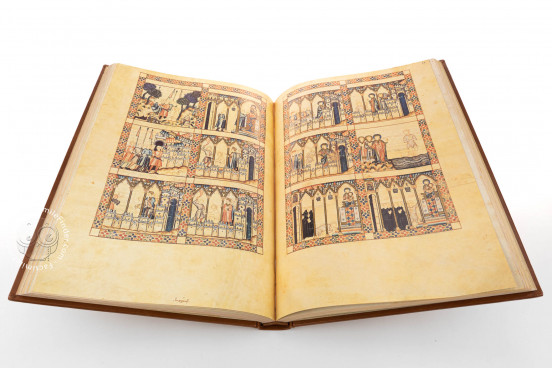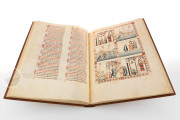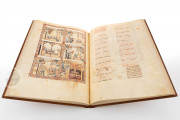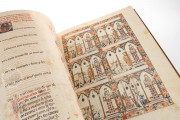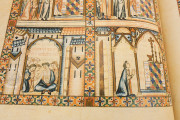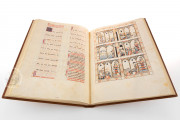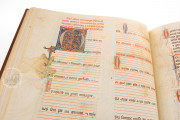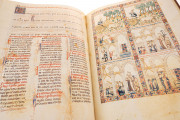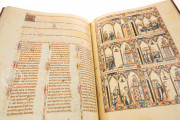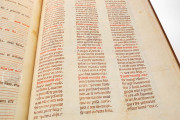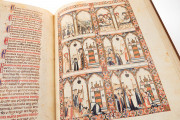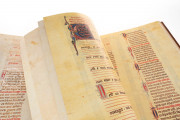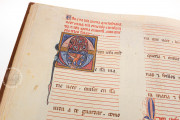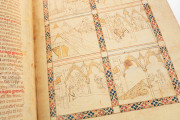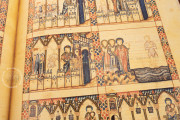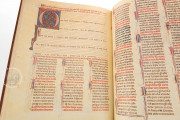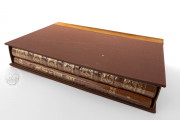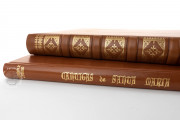The Florence Cantigas de Santa Maria is the second volume of a two-volume collection of Christian songs about the Virgin Mary undertaken at the behest of Alfonso X, King of Castile and Leon, but left incomplete probably because of his death in 1284. The manuscript was presumably made at Alfonso's court, which settled at Seville. The volumes were to be extensively illuminated. The Florence manuscript, begun in 1483, has a half-page frontispiece and eighty-nine historiated initials. Ink outlines were drawn for 107 framed full-page miniatures, but they were left in an array of states of finish.
The cantigas are narrative songs about the miracles of the Virgin or hymns in her honor. The illuminated codices of the songs offer modern readers visual, musical, and literary insights into the court of Alfonso, known as "the wise."
A Deluxe Compilation
The Florence manuscript's companion volume is the Cantigas de Santa Maria, also known as the Códice Rico ("rich codex") in the library at El Escorial. Together they present a nearly complete collection of the corpus of cantigas composed under Alfonso's influence.
A Halted Royal Undertaking
The process began with the collecting of miracle stories about the Virgin from local and foreign literary and oral traditions. These were then composed into texts to be sung. Sometimes the author of a cantiga mentions the extensive research involved in gathering his multitude of sources.
Written in Galician-Portuguese, the troubadour tongue of the Alfonsine court, the cantigas are arranged in groups of ten: nine songs recount miracles of the Virgin and are followed by a cantiga de loor, a song of praise. In the Florence manuscript, each cantiga is paired with either a full-page miniature divided into six compartments or a pair of miniatures, yielding twelve compartments.
Varying Degrees of Finish
The miniatures are in various stages of completion, offering modern viewers a view into production methods. Most of the ornate frames around the six panels are painted with beautiful floral motifs and symbols of Castile and Leon (castle turret and lion). Many of the illustrations, however, are no more than sketches, which is wonderful evidence of the technical processes of illumination. Some painting has been identified as the work of later campaigns.
Disordered and Disbound
A mishandling of the manuscript's unbound gatherings is likely to blame for its current unordered state. The principle of arranging the works in groups of ten has helped scholars reconstruct the original sequencing.
Drawing on local traditions, the music of the cantigas provides a wealth of information on medieval Iberian musical practice. Unfortunately, although all the music staves have been drawn, the cantigas of the Florence manuscript lack their musical notation.
When Alfonso was buried in the cathedral of Seville, the Escorial volume was deposited with him. The Florentine sister codex was likely rejected due to its unfinished nature and ended up in Florence around 1771.
We have 1 facsimile edition of the manuscript "Florence Cantigas de Santa Maria": Cantigas de Santa María facsimile edition, published by Edilan, 1989-91
Request Info / Price
